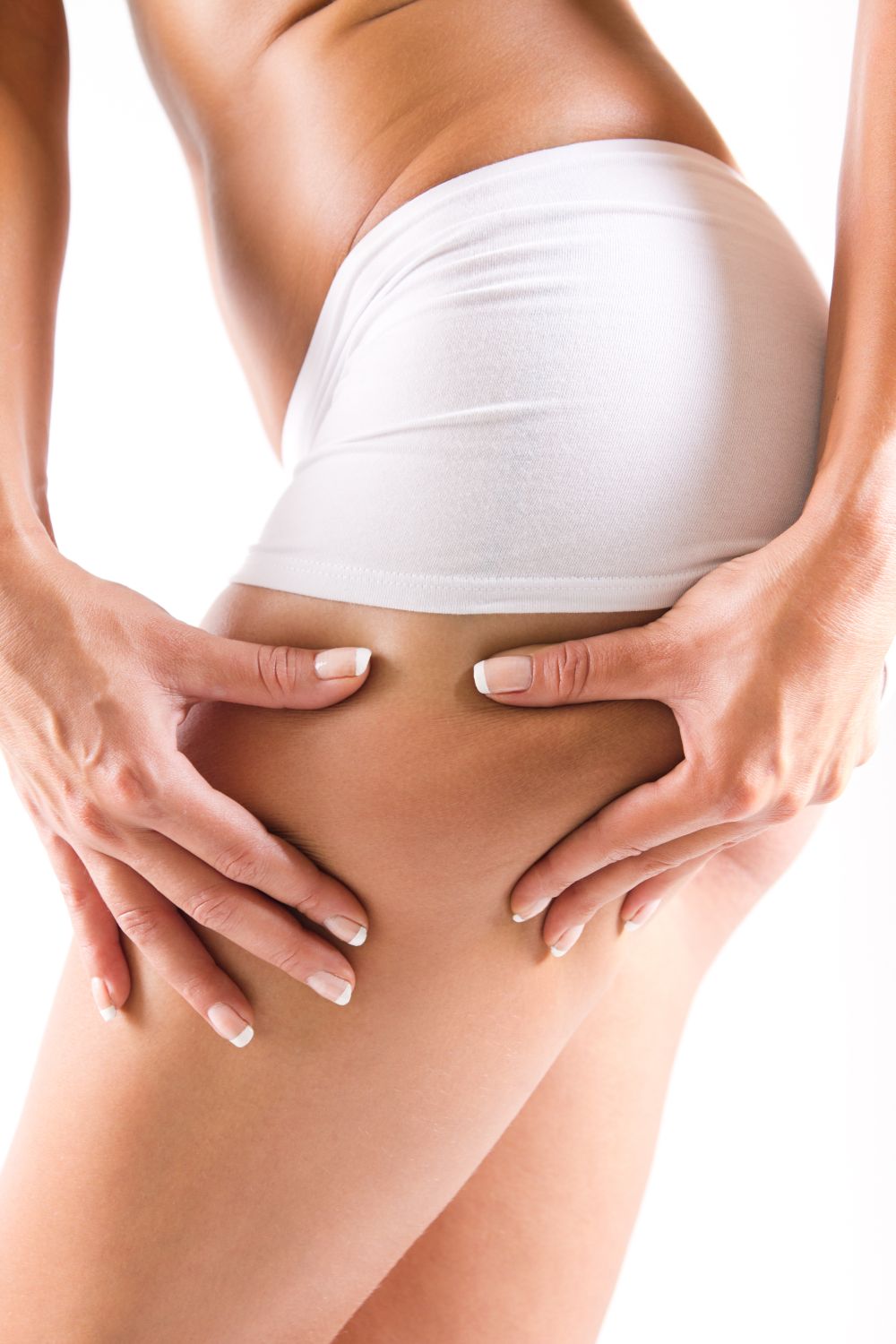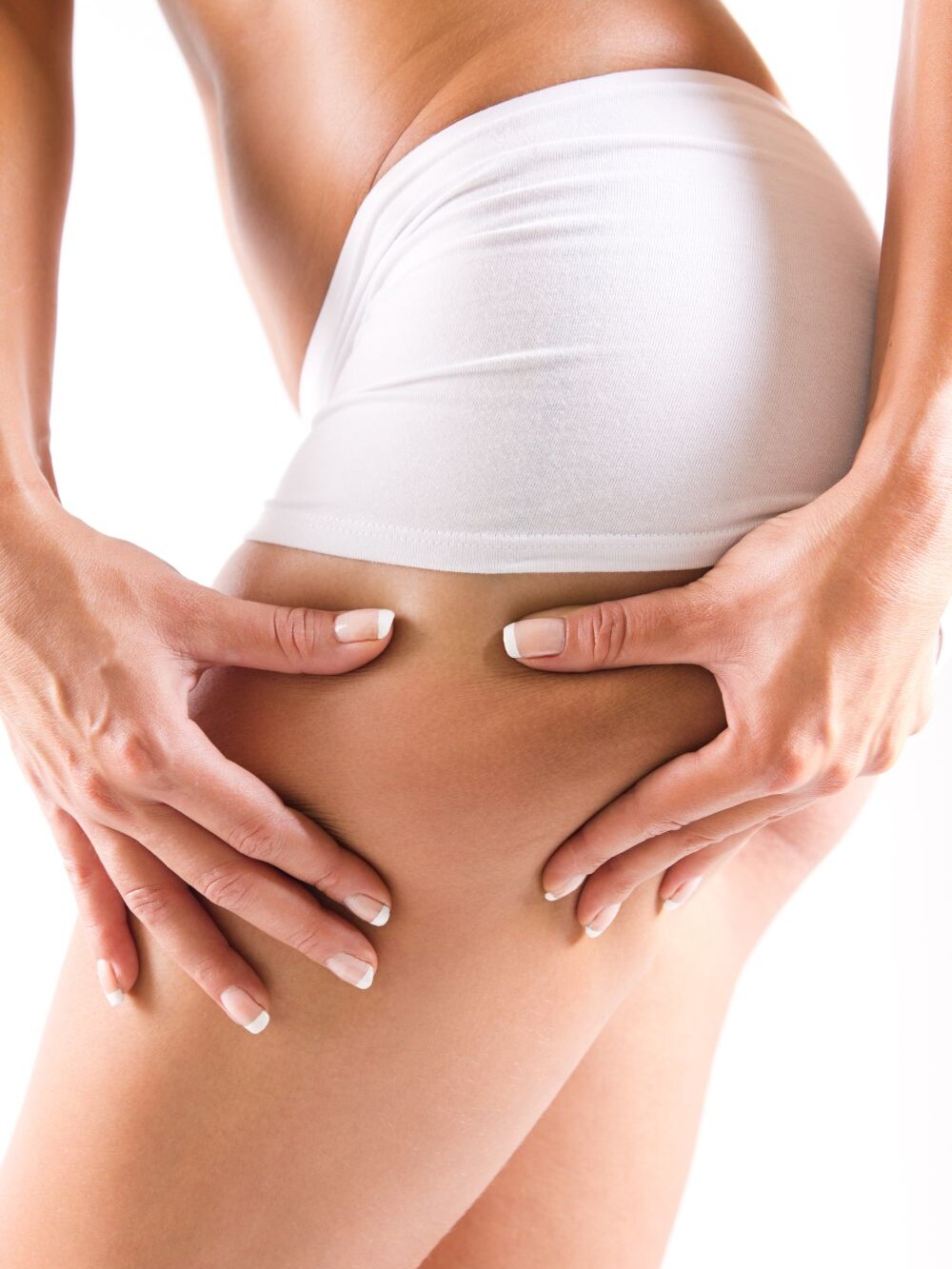Solutions
Cellulite is a condition characterized by the appearance of dimpled, lumpy skin, usually on the thighs, buttocks, and hips, caused by the protrusion of fat deposits into the connective tissue beneath the skin.
If you’re interested in fat reduction, treatments to minimize cellulite, or both, Albuquerque’s Western Dermatology Consultants can help you find the most effective techniques to achieve beautiful results.
Cellulite and diet-resistant pockets of fat have been incredibly common cosmetic concerns for patients for years—and 2023 looks to be no different. Having excess fat does not guarantee that you will also have cellulite, but chances are good that larger-than-desired thighs or buttocks will also feature those telltale dimples.
Although fat isn’t the cause of cellulite, the dimpling looks more pronounced when you gain weight. That’s why fat-reduction strategies and cellulite treatments are so closely linked.
Contact Us
For more advice about fat reduction and cellulite, contact Albuquerque′s Western Dermatology Consultants by calling 505-855-9267 or requesting a free consultation.
What Is Cellulite?
What is the main cause of cellulite? Is cellulite just fat?
Cellulite has been given many nicknames due to its texture: cottage cheese or orange peel skin, pincushion skin, the mattress phenomenon, hail damage. This common and harmless condition causes lumpy or dimpled flesh to form in certain areas like the thighs, hips, buttocks, breasts, lower abdomen, and upper arms.
Cellulite can appear on people—predominantly women—of all body types, including those who are fit and slim. Hormones, genetics, age, weight, eating habits, and the amount of collagen and elastin you naturally have in your skin are all factors that play a role in whether or not you develop cellulite.
The term “cellulite” originated in France more than 150 years ago and began appearing in English language publications in the late 1960s. On a clinical level, cellulite describes dimpling of skin caused by the protrusion of subcutaneous fat into the dermis. This creates an undulating look on the surface.
Put more simply, the condition is marked by small pits or divots in the skin that appear as the skin around them pushes outward due to large fat cells beneath.
Are you wondering, “Why do I have cellulite if I’m thin?” Remember that the real culprit is not fat, but connective bands—known as septae—that stretch from the underside of the surface of the skin to the tissues below. Think of septae as small columns found throughout the skin. They are essentially immobile, which is part of the problem. If they are surrounded by fat cells that are growing in volume, they remain resolutely fixed in place, as does the small spot skin above. If you have ever noticed a chair or couch cushion with a dimple sunken into a surface otherwise puffed out with stuffing, you get the idea. The fat cells push up against the connective tissues of the skin, which is what causes the dimpling or puckering.
What Are the Most Effective Treatments for Cellulite?
How do you reduce cellulite? What is the best treatment for cellulite?
It’s indeed possible to minimize the bumpy or dimpled flesh with the right types of in-office treatments, which have now become more evolved than ever before. However, it can be hard to know what works because there are so many treatment options available. While it is true that having excess weight can make cellulite more visible, fat reduction treatments such as CoolSculpting ® and Kybella ® are not recommended for treating cellulite. Cellulite is different from excess pockets of fat. As explained above, it has more to do with connective tissue.
That said, it can sometimes be beneficial to combine fat reduction techniques and treatments that reduce cellulite dimples to optimize results. Additionally, there’s a treatment that can target both types of concerns at the same time.
What Causes Resistant “Problem Areas” of Fat?
Have you ever wondered: Why is stubborn fat hard to lose? What causes stubborn fat? Do fat reduction treatments work? If these are some of the questions you’ve been asking, here’s what you should know.
Even if you lose weight and reduce the number on the scale, it can be difficult to get small, isolated areas of fat on certain parts of the body to “budge.” Even for people who are slim and healthy, there may be one or more pockets that they can’t seem to address with a healthy lifestyle alone, such as the thighs, belly, upper arms, or below the chin. The fat in these “problem areas” may not go away no matter how healthy your diet is or how much you work out. Factors that we have no control over—such as genetics and hormones—cause us to store fat in different ways.
Cosmetic fat reduction treatments can give these areas a firmer, more toned appearance.
What Are Fat Reduction Treatments?
How do you reduce fat deposits in your body? When you lose weight by creating a calorie deficit, fat cells don’t go anywhere, they simply shrink. This makes you more likely to gain weight in the future. Fat reduction treatments, on the other hand, remove fat cells completely—and these fat cells can’t come back.
Another difference between weight loss and fat reduction is that with weight loss, we can’t control which areas lose fat. In other words, spot reduction isn’t possible via exercise and diet. With cosmetic treatments for fat reduction, you can specifically target small, isolated areas. For those looking for non-invasive fat reduction options, Western Dermatology offers CoolSculpting®, and Kybella®.
CoolSculpting®
FDA-approved CoolSculpting® (cryolipolysis) is a fat reduction technique that works to reduce fat by chilling fat cells so that they crystallize, die, and are marked by the body for removal. The body gradually gets rid of these cells through natural processes during the following weeks and months.
While it is not a recommended treatment for dimpled skin, CoolSculpting® reduces the number of fat cells in an area, so it may sometimes make cellulite less prominent over time.
Kybella ®
Patients looking for fat reduction specifically in the neck area to address a double chin can choose Kybella®, which is an injectable liquid that works to break down fat cells and reduce volume in the targeted area. This fat reduction treatment is FDA-approved specifically for what is termed the “submental area.”
With CoolSculpting® multiple sessions are recommended in order to get ideal results, with cumulative improvements as the treatments continue. Results for all of the fat reduction treatments—including Kybella®—appear gradually as the body’s natural processes work to clear out fat cells and build new cells in the skin, depending on the treatment.
Who Are the Ideal Candidates for Treatments That Reduce Stubborn Fat and Cellulite?
If you have a BMI of less than 30 and fall under the Nurnberger-Muller Cellulite Classification Stage 1 and 2, then a non-surgical option could be ideal for you. Non-surgical treatments that reduce fat and cellulite are ideal for those who are healthy and are at a stable, healthy weight.
Contact Us
Want to reduce cellulite and stubborn fat? Learn about treatments for fat reduction and cellulite at Albuquerque′s Western Dermatology Consultants. Call 505-855-9267 or schedule a free consultation to find out more.
What Other Cosmetic Treatments Are Available?
In addition to treatments for dimpled skin and fat reduction, our Western Dermatology Consultants team also provides diagnosis and treatments for various other types of conditions, including uneven skin tone, large pores, unsightly veins, thin lips, dull dark circles, excessive sweating, excessive hair, and more.
Along with cellulite reduction, there are treatments that can enhance the appearance of your skin in other ways, including injectables like BOTOX® and dermal fillers to soften facial wrinkles, fractional laser treatments and other lasers to improve skin tone and texture, skin rejuvenation with chemical peels, microdermabrasion, facials, and radiofrequency-based skin tightening with TempSure™.


